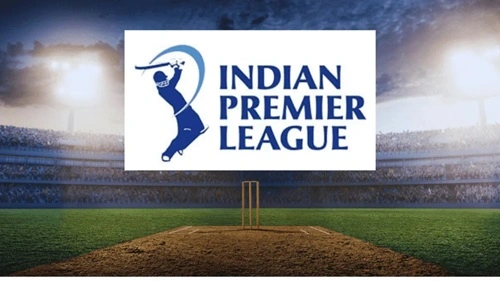The Indian Premier League (IPL) is a professional Twenty20 cricket league in India, launched in 2008 by the BCCI. It features franchise-based teams representing cities, owned by corporations, celebrities, and business tycoons. The IPL follows a T20 format, blending sports and entertainment, making it immensely popular worldwide. The business model of IPL includes revenue from sponsorships, broadcasting rights, ticket sales, and merchandise. Franchises earn from central revenue sharing, team sponsorships, and fan engagement activities. Broadcasting rights, like the multi-billion-dollar deals with Star Sports and Viacom18, form its largest revenue source, establishing IPL as a global sports and business phenomenon.
The IPL continues to be a significant force in global cricket, influencing the establishment of similar leagues worldwide. Its financial success and popularity have set a benchmark, though replicating its model has proven challenging for other tournaments and this page consists about the detailed SWOT Analysis of IPL so let’s go ahead.
Strengths
1. Global Popularity and Brand Value: The IPL continues to be a global phenomenon with an estimated brand valuation exceeding $15 billion in 2025. The league attracts players and fans worldwide, cementing its reputation as the most lucrative cricketing event.
2. Massive Audience Base: With over 600 million viewers, the IPL enjoys a strong connection with fans across demographics. Its ability to engage viewers on television and digital platforms makes it a dominant force in sports entertainment.
3. Innovative Broadcasting Strategies: IPL’s strategic partnerships with platforms like JioCinema and Star Sports have revolutionized sports broadcasting in India. Free streaming on digital platforms has expanded the audience base, driving record-breaking viewership numbers in 2024 and continuing into 2025.
4. High Revenue Streams: The league’s franchise model generates substantial revenue through broadcasting rights, sponsorships, ticket sales, and merchandise. For the 2023-27 cycle, IPL secured a broadcasting deal worth ₹48,390 crore, showcasing its financial strength.
5. Strong Franchise Ecosystem: The franchises themselves have grown into profitable entities, with iconic teams like Mumbai Indians and Chennai Super Kings valued at over $1 billion each. Their loyal fan bases further enhance the league’s stability.

Weaknesses
1. Overdependence on Key Markets: The IPL’s revenues heavily rely on India and a few cricket-loving nations. Limited penetration into non-cricketing countries restricts its global reach compared to sports like football.
2. Player Fatigue and Injuries: The IPL’s intense schedule impacts players physically and mentally, leading to fatigue and injuries, which can affect the quality of matches and participation of star players.
3. Inequality Among Franchises: Disparities in team performance and resource allocation sometimes lead to a lack of competitiveness among franchises, potentially reducing fan engagement for weaker teams.
4. Frequent Scheduling Conflicts: Overlapping with international cricket calendars often leads to player unavailability, impacting team compositions and tournament appeal.
Opportunities
1. Expanding Global Reach: With cricket gaining traction in countries like the USA and UAE, the IPL has a chance to host exhibition matches or expand its audience base in non-traditional markets, boosting global viewership and sponsorships.
2. Leveraging Technology: Innovations in augmented reality (AR) and virtual reality (VR) can enhance fan engagement. Interactive content, virtual fan zones, and gamified experiences provide opportunities to keep audiences engaged beyond match hours.
3. Strengthening Women’s Cricket: The Women’s Premier League (WPL), which gained traction in 2023, offers a platform to expand the IPL’s influence by promoting women’s cricket. The WPL has the potential to grow into a parallel revenue-generating tournament.
4. Eco-Friendly Initiatives: Adopting sustainability practices, such as reducing carbon footprints during tournaments, can align the league with global environmental goals and enhance its brand image.
5. Exploring New Revenue Channels: Diversifying into digital collectibles (NFTs), fantasy leagues, and exclusive content subscriptions can create new streams of revenue and attract younger audiences.
Threats
1. Economic Uncertainties: Global economic fluctuations and inflation can affect sponsorship deals, ticket sales, and discretionary spending, potentially impacting IPL’s revenue streams.
2. Rising Competition: Other T20 leagues like the Big Bash League (BBL), Pakistan Super League (PSL), and The Hundred are vying for global attention, creating competition for players, audiences, and sponsorships.
3. Ethical Concerns: Issues such as spot-fixing scandals or unethical practices can tarnish the league’s reputation, eroding trust among fans and stakeholders.
4. Climate Change Impacts: Unpredictable weather conditions due to climate change can disrupt matches, leading to revenue losses and logistical challenges.
5. Player Workload Management: Increasing concerns over player workload in a crowded cricketing calendar may lead to player withdrawals or restricted participation, affecting the league’s quality and star appeal.
Conclusion
The IPL in 2025 continues to thrive as a financial and entertainment powerhouse, showcasing the perfect blend of cricket and commerce. While its strengths, such as robust revenues, strong fan engagement, and global appeal, position it as a leader in the sports industry, addressing challenges like overdependence on specific markets, ethical concerns, and scheduling conflicts will be crucial.
To maintain its edge, the IPL must capitalize on emerging opportunities like expanding its global footprint, promoting women’s cricket, and integrating advanced technologies. By adapting to changing dynamics and mitigating threats effectively, the IPL can sustain its growth trajectory and continue redefining cricketing entertainment on the global stage.
Anantha Nageswaran is the chief editor and writer at TheBusinessBlaze.com. He specialises in business, finance, insurance, loan investment topics. With a strong background in business-finance and a passion for demystifying complex concepts, Anantha brings a unique perspective to his writing.


